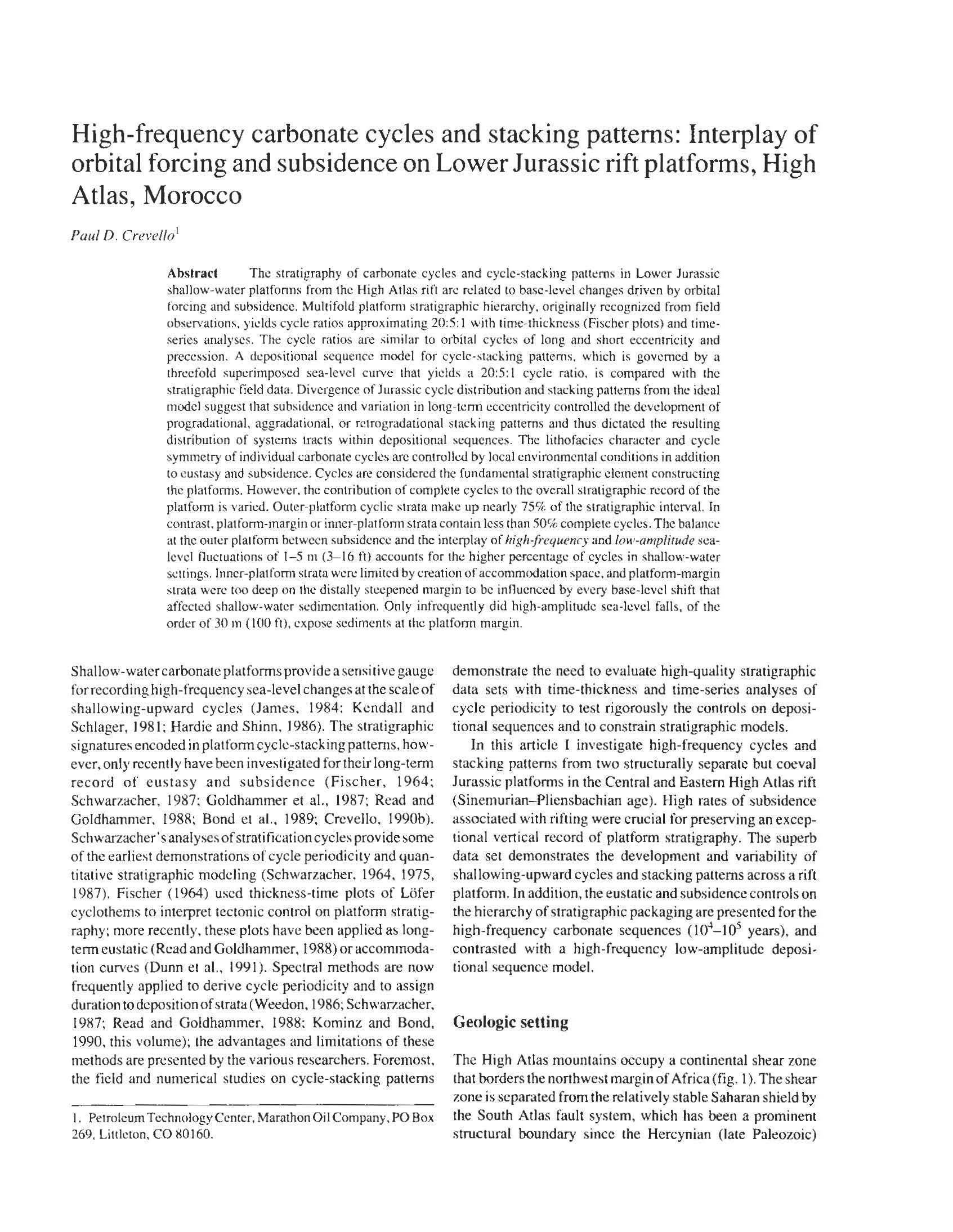High-frequency carbonate cycles and stacking patterns: Interplay of orbital forcing and subsidence on Lower Jurassic rift platforms, High Atlas, Morocco
DOI:
https://doi.org/10.17161/kgsbulletin.no.233.20459Abstract
The stratigraphy of carbonate cycles and cycle-stacking patterns in Lower Jurassic shallow-water platforms from the High Atlas rift are related to base-level changes driven by orbital forcing and subsidence. Multifold platform stratigraphic hierarchy, originally recognized from field observations, yields cycle ratios approximating 20:5:1 with time-thickness (Fischer plots) and time-series analyses. The cycle ratios are similar to orbital cycles of long and short eccentricity and precession. A depositional sequence model for cycle-stacking patterns, which is governed by a threefold superimposed sea-level curve that yields a 20:5:1 cycle ratio, is compared with the stratigraphic field data. Divergence of Jurassic cycle distribution and stacking patterns from the ideal model suggest that subsidence and variation in long-term eccentricity controlled the development of progradational, aggradational, or retrogradational stacking patterns and thus dictated the resulting distribution of systems tracts within depositional sequences. The lithofacies character and cycle symmetry of individual carbonate cycles are controlled by local environmental conditions in addition to eustasy and subsidence. Cycles are considered the fundamental stratigraphic element constructing the platforms. However, the contribution of complete cycles to the overall stratigraphic record of the platform is varied. Outer-platform cyclic strata make up nearly 75% of the stratigraphic interval. In contrast, platform-margin or inner-platform strata contain less than 50% complete cycles. The balance at the outer platform between subsidence and the interplay of high-frequency and low-amplitude sea-level fluctuations of 1-5 m (3-16 ft) accounts for the higher percentage of cycles in shallow-water settings. Inner-platform strata were limited by creation of accommodation space, and platform-margin strata were too deep on the distally steepened margin to be influenced by every base-level shift that affected shallow-water sedimentation. Only infrequently did high-amplitude sea-level falls, of the order of 30 m (100 ft), expose sediments at the platform margin.
Downloads

